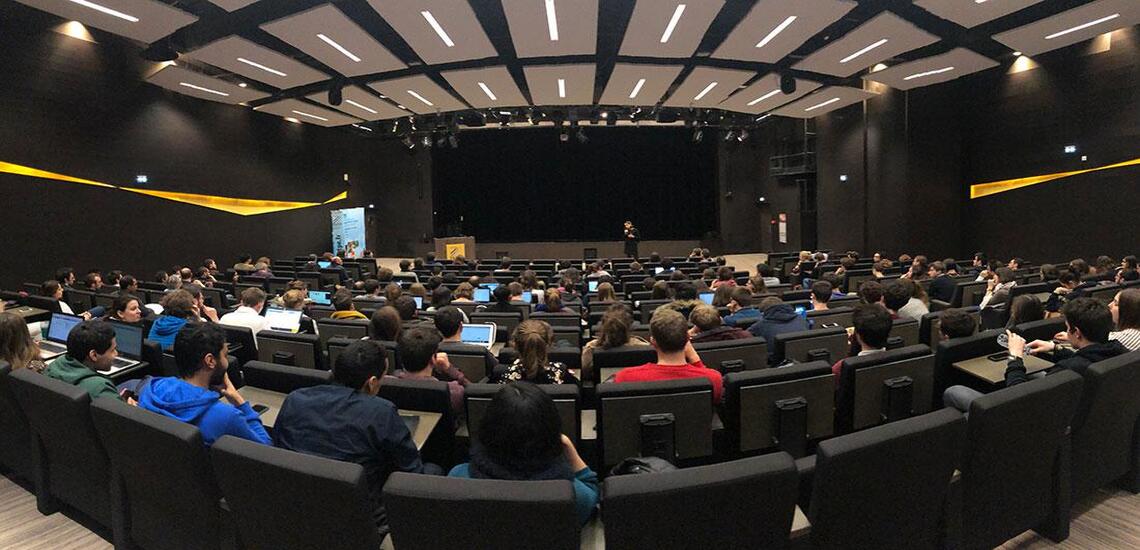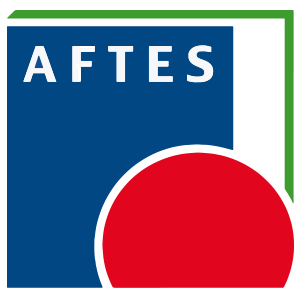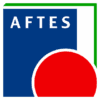
Invitation to the thesis defence of Agathe MICHALSKI (ITPE)
30 June 2023 Off By Marie-Christine MICHELYou are invited to attend the thesis defence of Agathe MICHALSKI (ITPE) entitled “Evaluation of the impact of excavated with a pressurised face tunnel boring machine on deep foundations – full-scale experimentation and numerical modelling”.
The presentation will take place on Wednesday 5 July at 2pm at ENTPE in the Prunier lecture theatre (F017).
The jury will be composed of :
EMERIAULT Fabrice, Professor, Grenoble Alpes University
PEREIRA Jean-Michel, Professor, École des Ponts et Chaussées
VIGGIANI Giulia, Professor, University of Cambridge (UK)
BOURGEOIS Emmanuel, IGPEF, HDR, Université Gustave Eiffel
BOUTIN Claude, ICTPE, HDR, ENTPE
BERTHOZ Nicolas, Doctor ITPE, Centre for Tunnel Studies
BRANQUE Denis, Research Fellow, ENTPE
For participants unable to attend the ENTPE, the presentation may be followed by videoconference via the following connection link:
https://us06web.zoom.us/j/84732297657?pwd=SUlOdG12ZTF0VG5RcjVZWHpJT2F1QT09
The thesis defense will be followed by a drink (place to be specified) to which you are invited.
Summary of the thesis
The sustainable development of urban areas is now leading to an increase in the number of underground public transport projects. In particular, the development of underground public transport networks appears to be an effective way of relieving congestion in city centres, encouraging a modal shift from car to public transport and combating urban sprawl. These underground structures are generally built in alluvial basins, characterised by loose, water-bearing soils, close to built-up areas (residential buildings or infrastructure structures) that are often deep underground. To build these urban tunnels, pressurised front-end tunnel boring machines (of the “earth pressure” or “mud pressure” type) are generally used. Although much progress has been made in recent decades, predicting the impact of tunnel boring on deep foundations remains a complex subject. In particular, there may be scope for optimising projects by relaxing technical constraints and/or reducing the financial provision associated with the damage that could be generated.
In this context, the aim of this thesis work is to improve understanding of the phenomena of TBM/ground/deep foundations interaction. It was carried out as part of the TULIP (TUnneliers et Limitation des Impacts sur les Pieux) partnership research project between the Société du Grand Paris Express, ENTPE, the Centre d’Études des Tunnels and the Université Gustave Eiffel. Two complementary approaches were used in this thesis, each of which is the subject of a separate section.
On the one hand, a full-scale experiment, original at international level, was carried out as part of the construction of the future line 16 of the Grand Paris Express. During this experiment, three instrumented piles 50cm in diameter and 15 to 20m deep were built and loaded in the geotechnical zone of influence of the future tunnel. All the data (machine, soil, piles) was used in this thesis. In particular, the influence of the machine control parameters, the displacements generated in the ground (at the surface and at depth) and the redistribution of forces in the piles were analysed during stationary driving regimes, as well as during brief transient regimes. The analysis thus produced made it possible to identify a number of mechanisms involved in the TBM/ground/pile interaction and to quantify the impact of excavation on the behaviour of the deep foundation as a function of excavation conditions, the geotechnical context and the relative position of the pile/tunnel.
In addition, a three-dimensional numerical model was developed using the FLAC3D finite difference calculation code. This model, developed using a Lagrangian approach, models the soil and piles in the form of volumetric elements. It assumes a single-phase behaviour of the soil governed by an elasto-plastic behaviour law with strain hardening. The actions of the TBM on the ground (face pressure, pressure along the shield, injection pressure and segment activation) are explicitly modelled. In order to analyse the capacity of this model to faithfully reproduce the process of pressurised tunnel excavation and the impact of this excavation on neighbouring deep foundations, the numerical results of this model were compared with the experimental results from full-scale experiments for the three aspects of the study: quasi-static loading of piles, excavation in virgin ground, excavation in the presence of piles.
To find out more about current theses



